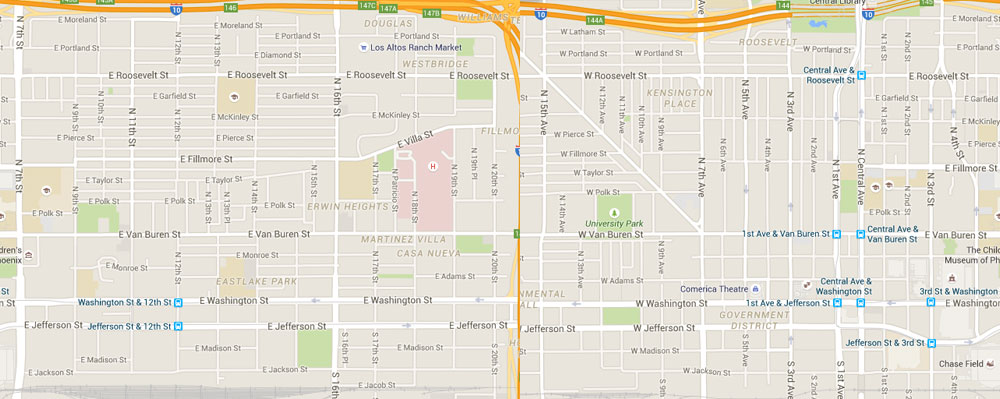
How to Streamline and Manage Your Agency’s Workflow
Anyone who has worked in an agency knows that there’s a lot of hustle and bustle. The creative juices are constantly flowing, the projects are ever-changing, and the challenges are often thought-provoking. This “chaos,” however, needs to be properly managed or the agency and its staff can be overwhelmed.
Managing workflows can be as important to success as being creative. It’s easy to lose sight of that in an agency setting. Yet agency managers and staff members must work to streamline workflows if they want to maximize output. Doing so will allow them to focus on more thought-provoking, effective, and better-received work.
Streamlining is easier said than done, but these seven quick tips will help you improve your agency’s workflow.
1. Hone in On Your Services
When you sell a product, you have something tangible and straightforward to sell. When you sell a service, however, it can be hard to specify exactly what you can and cannot do. Yet standardizing your services, and even better, homing in on the areas your agency excels at, can be tremendously beneficial.
One why to do this is to analyze your last six months of projects. Determine how much time each process or service takes. This will help you budget and price for future projects. Further, you might find hang-ups that are consuming a lot of time. If so, you could consider dropping or outsourcing those services. Then, you can focus on what you do best.
2. Create a Map of Your Workflows
Being able to envision workflows can be tremendously helpful. You can accomplish this by sitting down and literally mapping out each workflow, finding out who does what in what order, and where those projects are getting hung up or dropping off. A workflow map can help you visualize and understand these aspects.
Often, once you see the workflow you will identify bottlenecks. It’s important to consider what you might be able to do to alleviate these choke points. Doing so can greatly increase productivity and output. Better yet, fewer headaches may result in more creativity.
You don’t have to take on this challenge alone. In fact, it’s better to get the team involved. Ask your team members how they think workflows can be streamlined and where bottlenecks are. Providing teams an opportunity to provide feedback and solutions will demonstrate that you care about their opinions and insights.
3. Data, Data, and More Data
Many companies now strive to be data-driven. Creative teams should also incorporate data into their work. Organizing your creative teams should likewise be data-driven. No, you don’t have to be beholden to data, however, you should be data-informed.
Many marketing campaigns generate data. Facebook’s data platforms, Google Analytics, and various other tools can be used to gather data. See what’s working and what is underperforming. If certain ad campaigns are producing poor results, consider cutting them. If certain blog articles are generating hits, see how you can expand and improve the content to generate even more hits.
Further, you can measure internal workflow KPIs as well. Set up data-driven milestones (increase blog output by two posts per week, for example) and then strive to hit these goals. When setting up goals, set up targets that require extra effort, but also make sure that the extra effort is reasonable and the goals achievable.
Additionally, many process and workflow management tools generate data. With the right tools, you will be able to quickly see and often visualize your workflows. You can identify bottlenecks and projects that are falling behind or under performing. Act on the insights.
4. Make Meetings an Asset, Not A Hassle
Teams need to touch base from time to time. Problem is, poor team meetings can become a drag. Employees will start to dread them, spending more time rolling their eyes or zoning out rather than listening. However, with proper planning, you can make your team meetings an asset.
Set an agenda that is brief, to the point, and that covers the most vital areas. Make sure you email out this agenda before the meeting, so others can see it. Make sure you stick to the agenda and move through it as quickly as possible without skipping over vital points. If the meeting starts to drag on, consider bumping some agenda points to the next meeting.
It’s okay to set aside time for other people to provide input and raise points, but stress that the team meeting is supposed to be streamlined. If an employee raises a point that will eat up a lot of time, touch base on it in your current meeting, and then promise to set aside time in the next meeting to fully address it.
Poor team meetings can become a drag, but with proper planning, you can make your team meetings an asset. Click To Tweet5. Automation is Your Friend
Automation can be used to reduce the burden of many workflows. And no, automation isn’t only for big companies. Small agencies and teams can benefit just as much, if not more so, than big companies. Automation allows you to stretch resources further and can reduce time spent on menial tasks. For small teams, this can go a long way.
You can set up automated workflows to generate reports, upload, and even segment email lists, and to schedule social media posts for their most effective time slots. You can create templates for often used processes as well. There are many possibilities for automation these days, so make sure you consider all the options.
6. Get System Implementation Buy-In
Optimizing your workflows is going to require team effort. That means you need team buy-in. First, schedule a team meeting, with an agenda, to source feedback and to explain the need for streamlining the workflow. Let the team know that yes, there may be some short-term pains as you move to the new system. However, once the workflows are streamlined, productivity will increase, and headaches will be reduced.
Also, assign a point person for the streamlining process. That might mean you, or it might mean someone else. It’s good to find a “taskmaster” on the team who has a natural aptitude for keeping processes organized. Such individuals are often great for organizing team workflows.
It’s important to highlight again how vital team input is. If you want to increase buy-in, you must allow for feedback and by doing so, your team members will know that this isn’t a top-down effort, but instead a holistic effort that will incorporate everyone’s insights and address everyone’s needs.
7. Optimization Never Ends
Let’s wrap this up with a simple point: streamlining your workflows is a never-ending process. Armed with data, and team meetings that are efficient and source feedback, you’ll be able to continually streamline your workflows and processes. Also, encourage your team members to find assets, like automation tools, that will reduce their own burdens.
Set up KPIs and find out where your team is falling short. Address those issues. There’s usually no need to assign blame but instead, you must find opportunities to improve output. Sourcing feedback and using data will present many opportunities to optimize even troublesome workflows.
You may find some team members struggling to adapt to the new process. Sit down with these team members, one on one or with their direct supervisors, to find ways to help them adjust. As the process pays off and burdens are reduced buy-in will increase.















